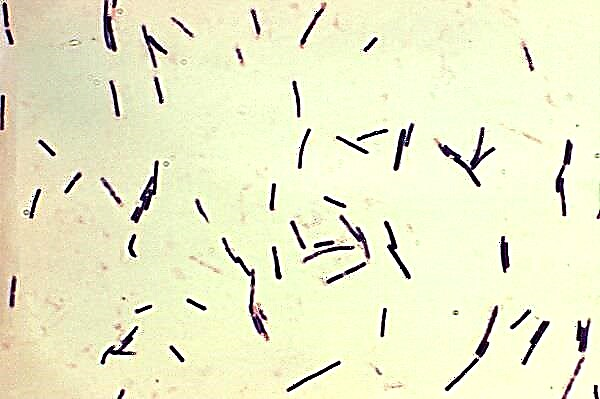Our country is tuberculosis endemic. Infection occurs when mycobacterium tuberculosis enters the human body. Children are most at risk of getting sick, especially in closed childcare facilities. The disease can begin without any specific symptoms. Therefore, special attention is paid to the examination of children.
In Russia, this is a Mantoux test, which makes it possible to monitor the development of immunity against tuberculosis and diagnose the fact of infection.
A little about tuberculosis
Tuberculosis is a chronic damage to human organs and tissues.

The disease is considered a social disease, which indirectly characterizes the way a person lives, his lifestyle. Children and men of asthenic physique are most at risk of being infected.
The causative agent, mycobacterium tuberculosis, was discovered by Robert Koch in 1884.
When examining the affected tissues through a microscope, it can be seen that at the heart of the lesion is a granuloma and around it necrosis (death) of the surrounding tissues.
It is impossible to isolate specific symptoms, especially in the early stages. We can only note weakness, an increase in body temperature to subfebrile numbers (mainly in the evenings), when the pleura is involved in the process, pain occurs in the shoulder area, with damage to the bones - pain in the corresponding parts of the body.
Diagnosis of tuberculosis

As already mentioned, there are no specific symptoms. Therefore, when parents complain about the child's general poor health, the doctor prescribes a referral for a clinical blood test. As with many other diseases, in the early stages of tuberculosis, the interpretation of the result is usually as follows: erythrocytosis, moderate leukocytosis, a slight acceleration of ESR. In the general analysis of urine, a toxic-allergic reaction is observed: an increase in the number of erythrocytes and leukocytes, the presence of protein. Biochemical studies are also of little informative, very often there may be no pathological changes.
In addition, in Russia, from one to 14 years old, the Mantoux reaction is carried out. From the age of 15, this study is not used to diagnose tuberculosis, but chest fluorography is massively performed.
Mantoux test
This study is carried out in a polyclinic, in organized educational institutions for children, specially trained teams of medical personnel. They also evaluate the results obtained. The essence of the process is intradermal injection of a solution of tuberculin in a volume of 0.1 ml to check the residual (after BCG vaccination) immunity against tuberculosis. The same test is used to detect infection with tuberculosis.
In Russia, the Mantoux test for mass diagnostics began in 1974.
The Mantoux test should in no way be confused with vaccinations. Here, the solution is introduced not for the formation of immunity in the future, but for the diagnosis of the already formed immunity, to find out at what stage it is, whether it is weakened, and the risk of infection with tuberculosis is assessed.
The test is carried out annually. Unvaccinated against tuberculosis - 2 times a year, children who have constant contact with a tuberculosis patient - every 3-4 months. Contraindications are acute and exacerbation of chronic diseases, violation of the integrity of the skin in various diseases, allergic reactions, quarantine for infections, epilepsy with large seizures. The results are evaluated after 72 hours.
What could be the reaction?
The following types of results are distinguished:
- anergic reaction - redness 0 - 1 mm in diameter, or prick reaction;
- hypoergic - papule 2 - 4 mm;
- normergic (positive reaction) - papule 5 mm or more;
- hyperergic - papule more than 17 mm, or the presence of necrosis, regardless of the size of the papule.
Normally, a year after BCG vaccination, the reaction should be positive. Further descending annually. The size of the papules is measured using a ruler, applying it perpendicular to the axis of the forearm bones.

Anergic type of result occurs when the body has not met with mycobacteria: a vaccine has not been made, or the body is not infected with an infection. If the child is 7 years old, and BCG is done only at birth, the pediatrician prescribes BCG revaccination. Note that revaccination is carried out only using BCG-M (in half the dosage).
Hypoergic and normmergic reactions - in healthy, vaccinated children.
A hyperergic result indicates a tuberculosis infection. In this case, the child needs to contact a phthisiatrician for a more complete diagnosis, examination, and appropriate treatment.
Allergy to tuberculin

When conducting a Mantoux test, they distinguish such a concept as post-vaccination allergy. By saying "post-vaccination" is meant an allergy to the administration of tuberculin. It happens that it is confused with a hyperergic reaction or with a food allergy.
Allergic manifestations to tuberculin are very different: redness and itching of the skin, swelling of the skin, papular rashes like urticaria, not only in the area of the injection, but also throughout the body. In young children, it is even possible to have an increase in body temperature, which is especially misleading for parents.
How to distinguish tuberculin allergy from food allergy? In this case, we will note several points. First of all, this is the fact that the child could have an allergy earlier, that is, before the sample was set.
Also, a hereditary predisposition often plays a role in the occurrence of allergies. Previously, in such children, parents noticed reddening of the skin of the cheeks, behind the ear region. Children prone to the development of allergic manifestations are given desensitizing drugs (for example Fenistil or Zyrtec) five days before the test and two days after it, a hypoallergenic diet is prescribed and physical impact on the injection site is excluded ("do not wet, do not scratch").
So, when reading the results, the health worker will receive the most correct answer for the presence of tuberculosis. If, nevertheless, it is not possible to distinguish the cause of the allergic reactions, then the child is sent to a tuberculosis dispensary to differentiate allergies, namely, a consultation with a phthisiatrician and a diaskintest are prescribed.
Speaking about allergy to tuberculin, one must not forget about the so-called infectious allergy, which occurs in children who have already become ill with tuberculosis. Such an organism is very sensitive to the penetration of tuberculin. For differentiation, you must seek the advice of a pediatrician and phthisiatrician.
| Post-vaccination allergy | Infectious allergy | |
| Time of occurrence | Appearance a year later, because the sample is put in a year. | Appearance 2 - 3 years after the bend. |
| Previous result | Positive papules precede. | For the first time a positive papule after previously negative results, or an increase in the previous papule by 6 mm or more. |
| The real result | Papule 5 - 11 mm, weakly expressed, gradually fades away and becomes negative. | The papule is more than 12 mm, pronounced clearly, has a tendency to grow, up to hyperergic results. |
Conclusion
In conclusion, it should be noted that tuberculosis is largely a social problem in our country. The incidence shows the standard of living. To become infected, it is necessary to have constant and long-term contact with the sick person or the carrier of mycobacteria. The Mantoux reaction is the most accessible method for detecting this insidious disease on the one hand and the most accurate (especially in childhood) on the other. Such an annual diagnosis allows you to take appropriate measures for further dissemination and timely provide the required treatment.



